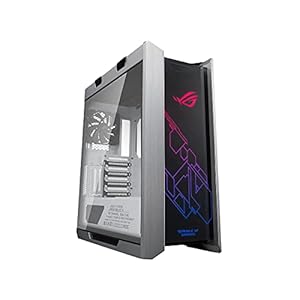The Voyager 1 spacecraft has been cruising through the cosmos for 47 years, collecting precious data beyond the solar system. All that interstellar travel, however, is taking its toll on the probe. Recently, NASA engineers had to resolve a thruster issue affecting Voyager 1, overcoming a series of obstacles posed by the probe’s aging hardware.
The wear-and-tear of space travel has caused Voyager 1’s thrusters to become clogged. A fuel tube inside the thrusters has filled up with silicon dioxide, a side effect of age within the spacecraft’s fuel tank. To help Voyager 1 continue its mission, a team of engineers switched to a different set of thrusters than the one the spacecraft had been relying on, NASA recently announced. Plot twist, that one is clogged, too.
Voyager 1 uses its thrusters to point itself towards Earth and keep communication lines open with ground control. The spacecraft has three sets of thrusters, two for attitude propulsion and one for trajectory correction maneuvers. During the beginning of its mission, Voyager 1 needed the different types of thrusters to carry out its planetary flybys, but the spacecraft is now on a straightforward path out of the solar system, therefore it’s no longer picky with which one it uses.
In 2002, the mission team at NASA’s Jet Propulsion Laboratory noticed some fuel tubes in the attitude propulsion thruster set were starting to clog. The team switched to the second attitude propulsion set, but that one showed signs of clogging in 2018, which prompted the engineers to rely on the trajectory correction thruster set.
Over the past six years, that thruster became even more clogged than the other two when the team made the switch. The opening of the trajectory correction thruster tube was originally 0.01 inches (0.25 millimeters) in diameter, and now it’s been reduced to 0.0015 inches (0.035 mm), or about half the width of a human hair, according to NASA. As a result, the team had no choice but to switch back to one of the two attitude propulsion thrusters.
This procedure of switching thrusters would’ve been easy back in the day, but Voyager 1 is no spring chicken and the spacecraft requires more careful handling today. Controllers turned off some unnecessary onboard systems, including some heaters. That strategy successfully reduced the spacecraft’s power usage, but it also caused Voyager 1 to become colder. As a result, turning on the unused thrusters risked damaging them, so the team had to warm them up first using the spacecraft’s non-essential heaters.
The dilemma continued, as the spacecraft’s power supply is now so low that turning on the non-essential heaters would require the mission team to turn off something else. Instead, the engineers figured they could turn off the spacecraft’s main heaters for about an hour, just enough time to warm up the thruster.
All that effort paid off, and Voyager 1’s needed thruster branch was up and running. It’s clear, however, that the aging interstellar probe requires a lot more to keep up and running. “All the decisions we will have to make going forward are going to require a lot more analysis and caution than they once did,” Suzanne Dodd, Voyager’s project manager, said in a statement.
Voyager 1 launched in 1977, less than a month after its twin probe, Voyager 2, began its journey to space. The spacecraft took a faster route, exiting the asteroid belt earlier than its twin, and making close encounters with Jupiter and Saturn, where it discovered two Jovian moons, Thebe and Metis, and five new moons, and a new ring called the G-ring, around Saturn.
Voyager 1 ventured into interstellar space in August 2012, becoming the first spacecraft to cross the boundary of our solar system.The spacecraft is currently 15.14 billion miles away (24.4 billion kilometers), flying through interstellar space at a speed of 38,000 miles per hour (61,155 kilometers per hour).
Trending Products

Cooler Master MasterBox Q300L Micro-ATX Tower with Magnetic Design Dust Filter, Transparent Acrylic Side Panel, Adjustable I/O & Fully Ventilated Airflow, Black (MCB-Q300L-KANN-S00)

ASUS TUF Gaming GT301 ZAKU II Edition ATX mid-Tower Compact case with Tempered Glass Side Panel, Honeycomb Front Panel, 120mm Aura Addressable RGB Fan, Headphone Hanger,360mm Radiator, Gundam Edition

ASUS TUF Gaming GT501 Mid-Tower Computer Case for up to EATX Motherboards with USB 3.0 Front Panel Cases GT501/GRY/WITH Handle

be quiet! Pure Base 500DX ATX Mid Tower PC case | ARGB | 3 Pre-Installed Pure Wings 2 Fans | Tempered Glass Window | Black | BGW37

ASUS ROG Strix Helios GX601 White Edition RGB Mid-Tower Computer Case for ATX/EATX Motherboards with tempered glass, aluminum frame, GPU braces, 420mm radiator support and Aura Sync









